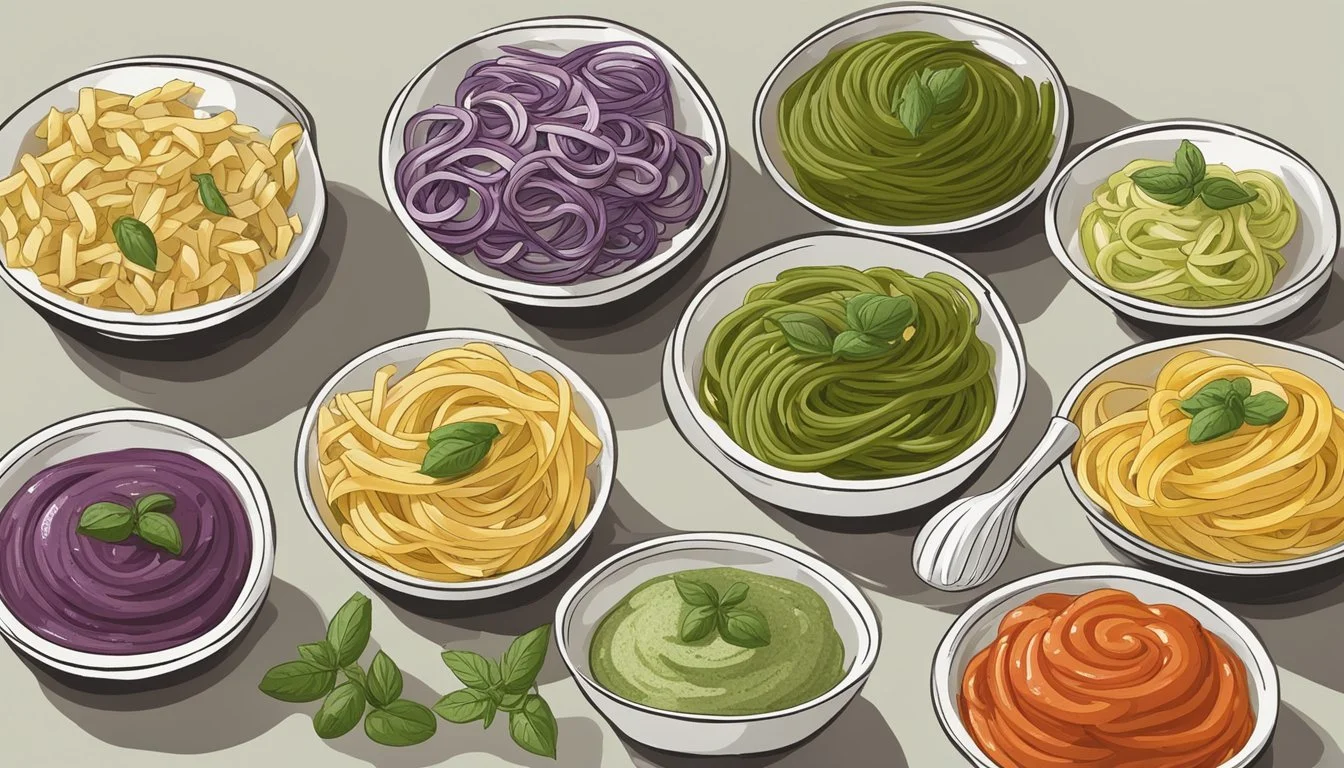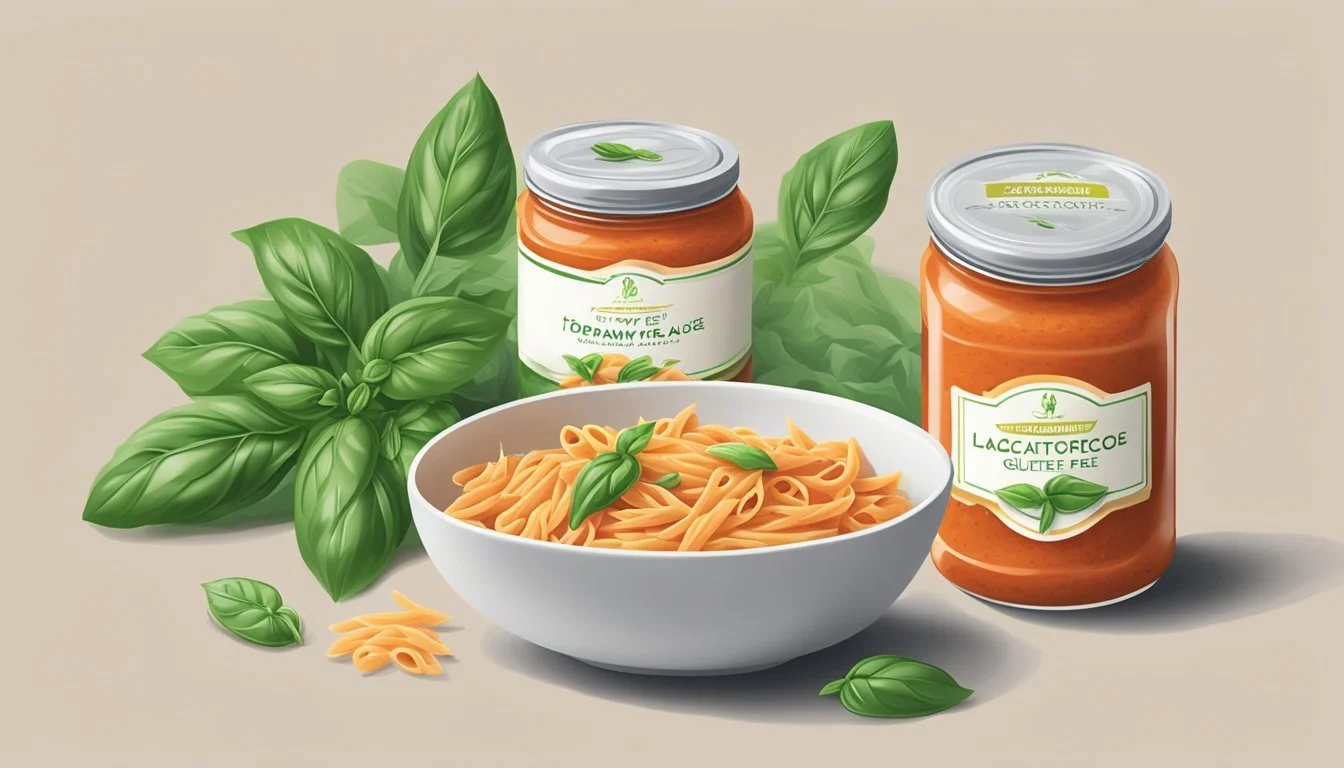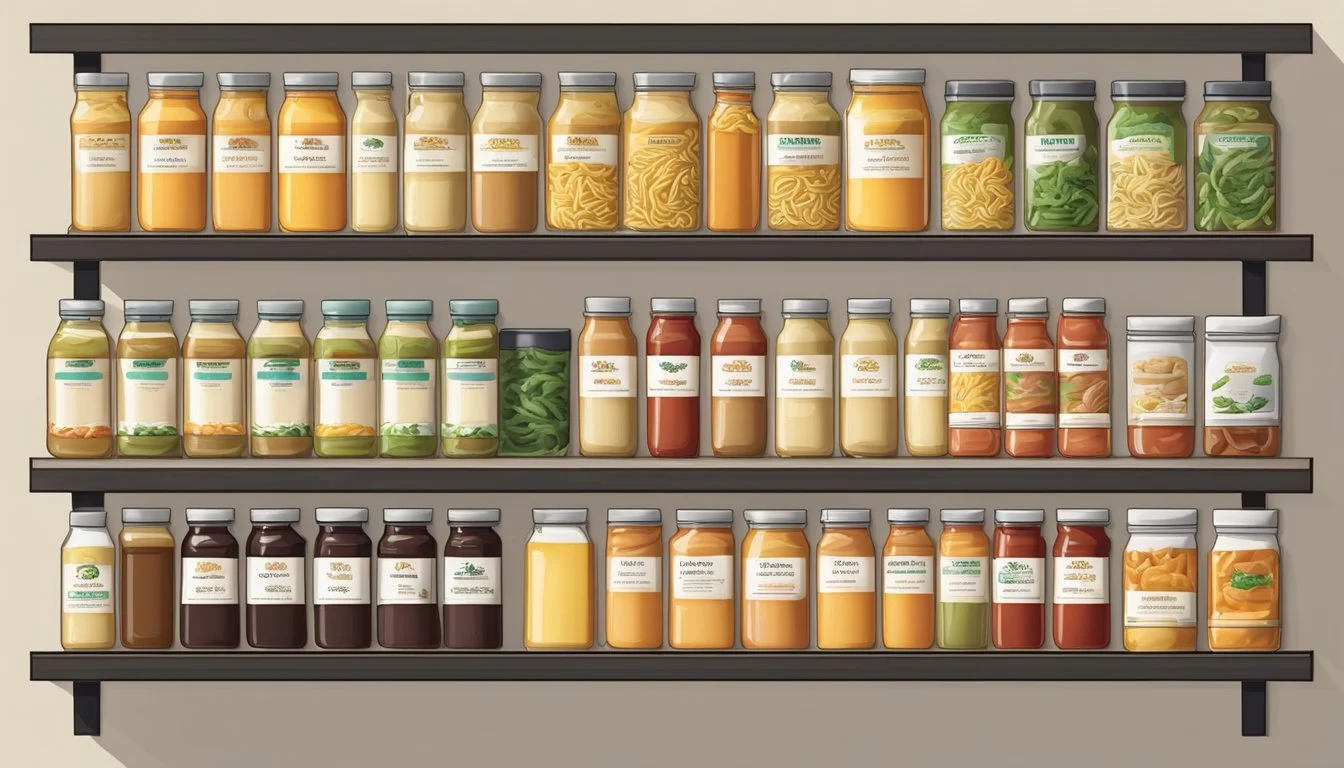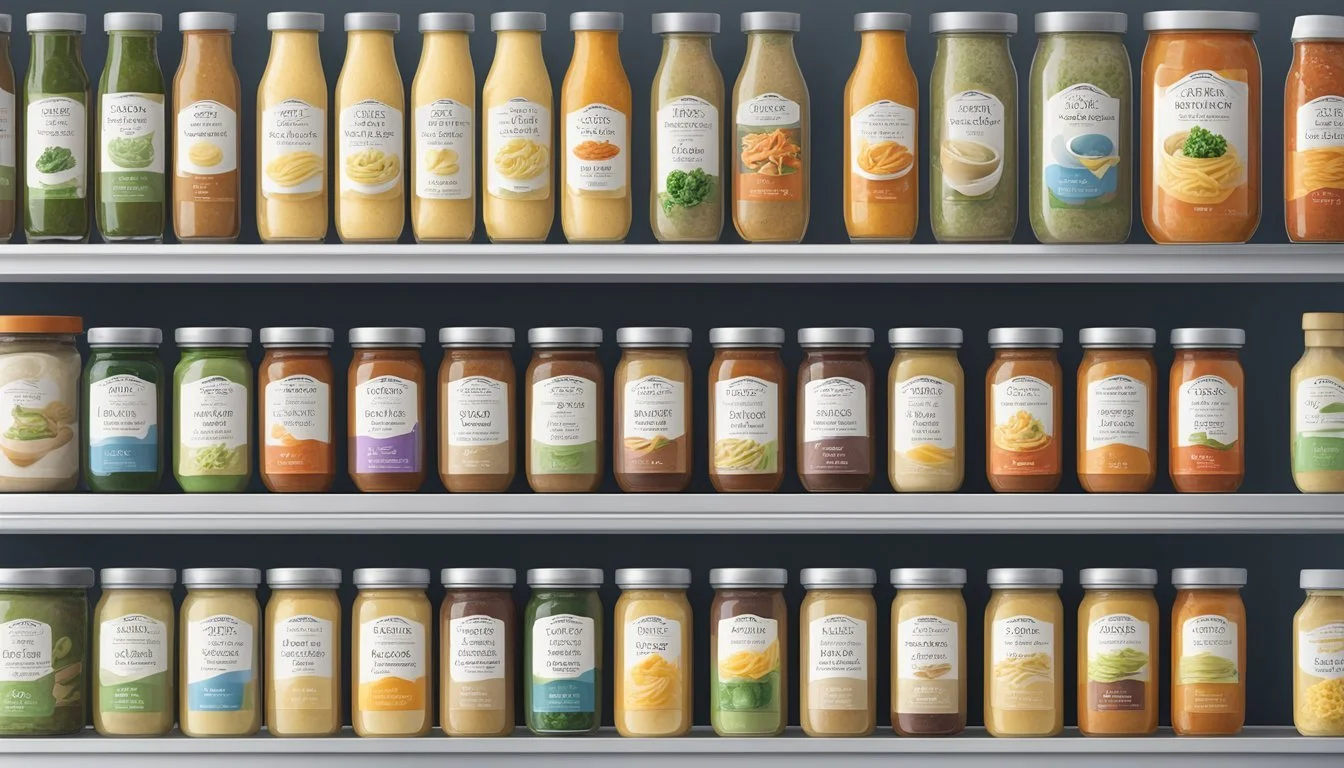What Are Some Lactose-Free Pasta Sauces?
Exploring Dairy-Free Options
Navigating dietary restrictions doesn't mean sacrificing flavor, especially when it comes to pasta sauces. Lactose-free options have become increasingly available, allowing those who are lactose intolerant or dairy-averse to enjoy a range of savory sauces without discomfort. From rich and creamy to herby and fresh, lactose-free pasta sauces can be as varied and delicious as their dairy-containing counterparts.
Many traditional sauces like marinara and arrabbiata are naturally lactose-free, relying on tomatoes, garlic, and herbs for flavor. However, when venturing into creamier sauces, dairy substitutes are utilized to achieve the desired texture. Innovations in dairy alternatives have introduced a variety of lactose-free ingredients, such as coconut milk and cashew cream, which chefs use to create indulgent, creamy pasta sauces without any lactose. Additionally, pesto, a classic sauce made with basil, garlic, and nuts, can be easily adapted for a lactose-free diet by omitting cheese or using nutritional yeast as a substitute.
With a growing range of dairy-free products on the market, the availability of lactose-free pasta sauces in grocery stores and recipes online is better than ever. This ensures that lactose-free diets can be diverse and full of flavor, and pasta night remains a coveted tradition for everyone at the table.
Understanding Dairy-Free Pasta Sauces
Dairy-free pasta sauces offer delicious alternatives to traditional sauces that contain lactose. These sauces are designed for individuals with lactose intolerance or for those who follow a vegan diet. The primary distinction in dairy-free sauces is the absence of ingredients such as milk, cheese, and butter.
One can find a wide variety of vegan and non-dairy pasta sauces available on the market. A popular option is pesto, traditionally made with cheese, but now available in vegan versions that use substitutes like nutritional yeast to mimic the cheesy flavor. Ingredients like basil, garlic, and olive oil remain the core components, ensuring the authentic taste of pesto is maintained.
Creamy sauces without dairy are also possible using ingredients like cashews or almond milk to create a rich texture. These sauces often incorporate savory elements like onions and garlic, which are sautéed and then blended to achieve a smooth consistency.
Tomato-based sauces are naturally dairy-free and offer a classic taste that complements a variety of pasta dishes What wine goes well with pasta dishes?. To enhance these sauces, herbs, and spices are added, and sometimes a splash of wine is used to deepen the flavor profile.
For those looking to go dairy free without sacrificing flavor, the exploration of dairy-free pasta sauces can be a delightful culinary journey. It's important to read labels carefully, as some products may still contain traces of dairy or be produced in facilities that handle dairy products.
Key Ingredients for Lactose-Free Sauces
Lactose-free pasta sauces harness a variety of base ingredients and flavor enhancers to achieve a rich and satisfying taste without the use of dairy.
Base Ingredients
The foundation of any good lactose-free pasta sauce begins with high-quality oil and cream alternatives. A staple for most sauces, olive oil imparts a distinct taste while serving as an excellent medium for sautéing aromatics like garlic and onions. Non-dairy cream options include:
Coconut milk: A thick, creamy liquid that adds a full-bodied texture to sauces.
Cashew cream: Made by blending soaked cashews with water, yielding a smooth and creamy base.
For those who prefer a more vegetable-forward sauce, pureed vegetables such as roasted tomatoes, butternut squash, and steamed cauliflower can offer substance and natural sweetness.
Flavor Enhancers
To elevate a lactose-free sauce, incorporating flavorful spices, salt, and aromatics is key. Garlic, whether sautéed or roasted, offers a savory depth of flavor, while onion adds sweetness and complexity when cooked until translucent or caramelized. Fresh herbs like basil and lemon zest can bring a bright, zesty note to the sauce.
A variety of spices and seasonings can be used to tailor the sauce to specific dish profiles. Adjust the balance of salty and savory to preference, and do not hesitate to experiment with different combinations to achieve the desired flavor palette.
Popular Dairy-Free Sauce Varieties
Diversity in dairy-free pasta sauces means that there is a range of options available to cater to individual dietary needs and flavor preferences, from zesty tomato-based concoctions to rich and velvety non-dairy creams, as well as simple, yet flavor-packed oil and garlic infusions.
Tomato-Based Sauces
Tomato-based sauces are a staple in dairy-free cooking due to their natural richness and compatibility with a variety of herbs and spices. Homemade tomato sauce typically involves simmering crushed tomatoes along with seasonings like basil, oregano, and garlic. Those looking for convenience without sacrificing taste can blend tomato paste with water or a dairy-free broth to achieve the desired consistency. A flavor variation like roasted tomato pasta sauce adds depth, with the roasting process bringing out the natural sweetness of the tomatoes.
Ingredients:
Crushed tomatoes
Tomato paste
Herbs (basil, oregano)
Garlic
Preparation:
Simmer ingredients
Roast tomatoes for deeper flavor
Creamy Alternatives
Dairy-free doesn't mean devoid of creaminess. Sauces such as creamy pasta sauce or alfredo sauce are reimagined using ingredients like avocado, which provides a smooth and buttery texture, or oat milk for a lighter, yet creamy consistency. These bases can be blended with nutritional yeast and seasonings to mimic the rich and satisfying essence of their dairy counterparts.
Ingredients:
Avocado or oat milk
Nutritional yeast (for cheesy flavor)
Preparation:
Blend till smooth
Season to taste
Oil and Garlic Infusions
For those seeking simplicity, oil and garlic infusions are a go-to. Olive oil serves as the perfect medium, with its fruity notes, to carry the pungent aroma of garlic. This infusion forms the base of many quick and light pasta sauces that are not only dairy-free but also easy to prepare.
Ingredients:
Olive oil
Garlic
Preparation:
Heat oil, sauté garlic
Toss with pasta
Healthy Additions and Substitutions
In the realm of lactose-free pasta sauces, integrating a variety of wholesome ingredients can enhance both nutritional value and flavor. Opting for vegetable infusions and protein-rich additions ensures a balance of fiber and protein, essential for a healthy diet.
Vegetable Infusions
Vegetable infusions are an excellent way to inject fiber and nutrients into pasta sauces. Simple yet wholesome vegetables like cauliflower, broccoli, and zucchini can be blended into sauces to add both creaminess and a nutritional boost. Carrots, not only add sweetness and vibrant color but also contribute valuable vitamins and antioxidants.
Cauliflower: Puree steamed cauliflower to create a creamy sauce base.
Broccoli: Finely chopped and steamed broccoli adds texture and fiber.
Zucchini: Blend zucchini for a nutrient-dense sauce thickener.
Carrots: Steam and puree for a naturally sweet and healthy sauce.
Protein Options
Introducing protein to pasta dishes can be done seamlessly with lactose-free alternatives. Lean proteins such as chicken and fish are excellent choices. For those opting for seafood, salmon and shrimp offer omega-3 fatty acids and high-quality protein.
Chicken: Grilled or baked chicken breast, diced or shredded, complements any sauce.
Fish: Flaky fish like cod or tilapia can be gently mixed into sauce.
Salmon: Offers a heart-healthy boost in a tomato or creamy sauce.
Shrimp: Quick to cook and mix in for an elegant protein addition.
Incorporating nutritional yeast is another way to add protein to sauces, with the added benefit of imparting a cheese-like flavor while remaining dairy-free. It's an especially beneficial substitute for those with lactose intolerance looking for a nutrient-dense and flavorful meal experience.
Customizing Your Pasta Experience
Creating a lactose-free pasta sauce does not mean compromising on flavor or variety. In fact, it opens up a world of possibilities where individuals can tailor their pasta dishes to their dietary needs and taste preferences. Whether one is seeking gluten-free or nut-free options, or simply aiming to control sodium intake, there are abundant ways to customize.
For a staple like pasta sauce, the foundation often begins with a base of sautéed onions and garlic in olive oil. From this starting point, customization is key. For those avoiding gluten, ensuring that all ingredients, including any thickeners like flour, are certified gluten-free is crucial. As an alternative, cornstarch or gluten-free flours can be employed to achieve the desired consistency without gluten.
For individuals with nut allergies, nut-based sauces must be omitted. Instead, one can create richness and depth with seeds such as sunflower or pumpkin, which can be blended into a creamy sauce without the need for dairy or nuts.
Customization doesn't stop at allergens. When it comes to salt, control is in the hands of the chef. One can opt for low-sodium vegetable stock and adjust the seasoning to taste, using fresh herbs and spices to enhance flavors while keeping salt content to a minimum. This is especially important for those monitoring their salt intake for health reasons.
To summarize customization options:
Gluten-Free: Use cornstarch or gluten-free flours as thickeners.
Nut-Free: Utilize seeds such as sunflower or pumpkin to create creamy textures.
Salt Control: Opt for low-sodium stocks and increase flavor with fresh herbs and spices.
Every pasta dish can be a reflection of personal dietary needs and preferences, with a variety of sauces that cater to lactose-free diets without sacrificing taste.
Nutritional Considerations
When choosing lactose-free pasta sauces, one should carefully consider their nutritional content, including their energy provision, macronutrient makeup, and essential micronutrient density.
Caloric Content
Lactose-free pasta sauces vary in caloric content. The use of ingredients such as olive oil, though heart-healthy, can contribute to a higher caloric density due to its fat content. Conversely, sauces predominantly made from vegetables like tomatoes can be much lower in calories. For instance, a traditional marinara sauce might contain approximately 70-80 calories per half-cup serving.
Macronutrient Balance
The balance of macronutrients in lactose-free pasta sauces is crucial for maintaining a well-rounded diet.
Fats: The type of fat present in these sauces should be scrutinized. Many sauces include monounsaturated and polyunsaturated fats from sources like olive oil, which are considered beneficial to heart health. Saturated fat is generally lower in plant-based sauces.
Carbohydrates: Lactose-free sauces tend to have a carbohydrate content driven by the vegetables used, such as tomatoes. These sauces typically contain a modest amount of sugars, naturally occurring from the ingredients.
Protein: While not a significant source of protein, some sauces may include nuts or tofu, modestly increasing protein content.
Vitamins and Minerals
A variety of vitamins and minerals are present in lactose-free pasta sauces, and their levels depend largely on the specific vegetables and additional ingredients used.
Vitamin C and Vitamin A are commonly found in tomato-based sauces, which can be a good source of these antioxidants.
Calcium and Iron: Some sauces might be fortified with these minerals, especially if they include fortified plant-based milk or tofu.
Potassium: High in tomato-based sauces, beneficial for blood pressure regulation.
The nutritional profile of each sauce can vary greatly based on its ingredients, so reading labels is essential for those monitoring their intake of calories, macronutrients, and micronutrients.
Cooking and Storage Tips
Creating dairy-free pasta sauces requires attention to detail, both in choosing the right ingredients and in the methods of preparation and storage employed to maintain the flavor and quality of the sauces. A high-speed blender can be essential for achieving a smooth texture, particularly in sauces that utilize ingredients like cauliflower or soaked cashews as a dairy substitute.
Preparing Dairy-Free Sauces
When preparing dairy-free pasta sauces, starting with a base of aromatic vegetables like onions and garlic can infuse the sauce with rich flavors, which is a common practice in many recipes. The vegetables should be sautéed until they are soft, which usually takes about a few minutes, before they are transferred to a high-speed blender.
In dairy-free pasta recipes, the choice of liquid can vary from vegetable stock to water from the cooked vegetables, which is reserved to help create the desired sauce consistency. After blending, it is important to taste the sauce and adjust seasoning as needed. These sauces can be combined with the pasta of choice and other ingredients like sautéed cherry tomatoes or spinach to create a balanced and satisfying dairy-free pasta recipe.
For storage, sauces can typically be kept in an airtight container in the refrigerator for up to a week. If dry pasta sauce mix is used, it should be stored in a cool, dry place, and it can last up to 18 months unopened. Once prepared, however, it's best consumed within the same time frame as homemade sauces.
Serving Suggestions
Choosing the right pasta and accompaniments can elevate a dish featuring lactose-free or vegan pasta sauce.
Pasta Pairings
Spaghetti: A classic choice, spaghetti pairs well with smoother sauces such as a rich tomato marinara or a creamy, dairy-free Alfredo sauce made from cashews or cauliflower.
Penne: Penne's tube shape and ridges are ideal for thicker, chunkier sauces, such as a robust lentil Bolognese or a hearty vegetable primavera.
Chickpea Pasta: High in protein and gluten-free, chickpea pasta complements a variety of vegan sauces, including both tomato and creamy options.
Lentil Pasta: Another protein-packed alternative, lentil pasta stands up well to bold flavors like a spicy arrabbiata sauce or a zesty dairy-free pesto.
Accompaniments
Veggies: Steamed or roasted vegetables such as broccoli, asparagus, or zucchini can add color, nutrition, and texture to a lactose-free pasta dish.
Side Salad: A crisp side salad with a light vinaigrette dressing offers a refreshing contrast to the rich flavors of dairy-free pasta sauces.
Legal and Privacy Considerations
When discussing lactose-free pasta sauces, it's crucial to consider the legal and privacy implications associated with the sharing of personal dietary information. Many individuals seek out lactose-free options due to lactose intolerance or other dietary restrictions, which may be considered sensitive information.
Companies that produce lactose-free pasta sauces may collect customer data through online purchases or loyalty programs. It is essential that these entities maintain robust privacy policies that comply with applicable data protection laws, such as the GDPR for customers in the European Union or the CCPA in California. These policies should detail how customer information is collected, used, and protected, and they should be easily accessible to consumers.
Moreover, transparency in labeling is also a legal requirement. Producers of lactose-free products must accurately label their sauces to ensure they are indeed free from lactose and comply with food labeling regulations. Mislabeling can lead to legal ramifications and damage customer trust.
In essence, companies have an obligation to protect consumer privacy and adhere to truthful labeling, ensuring that customers can make informed choices about the lactose-free pasta sauces they purchase.









